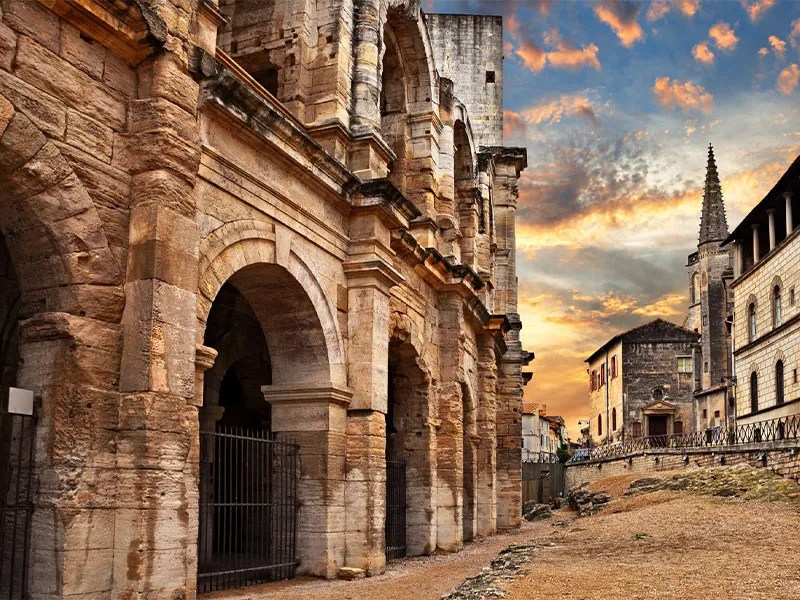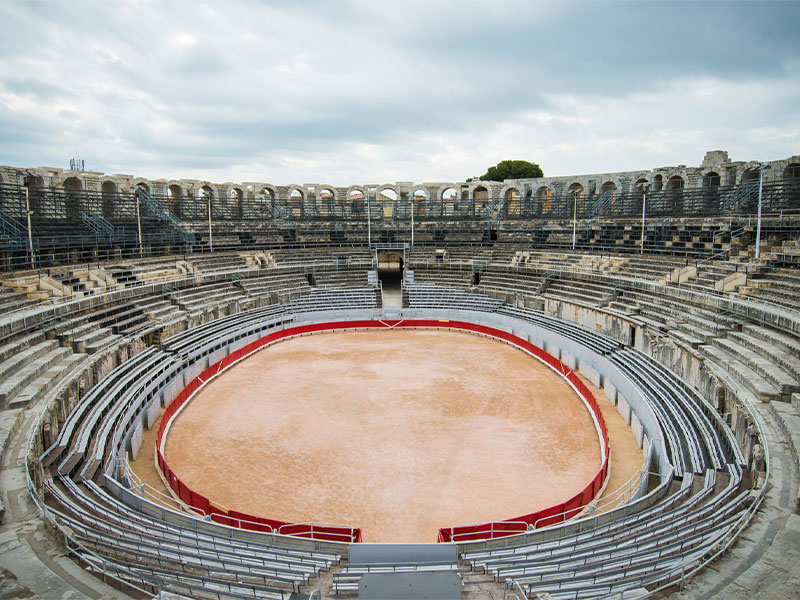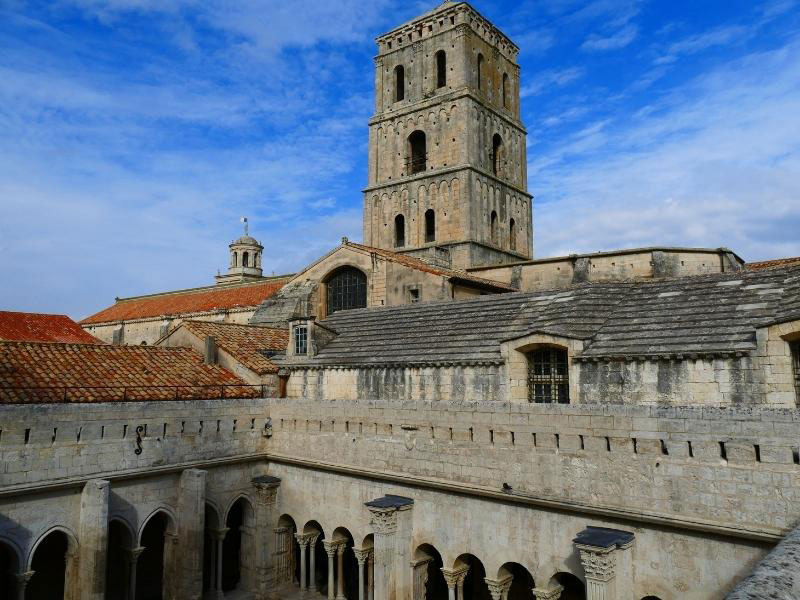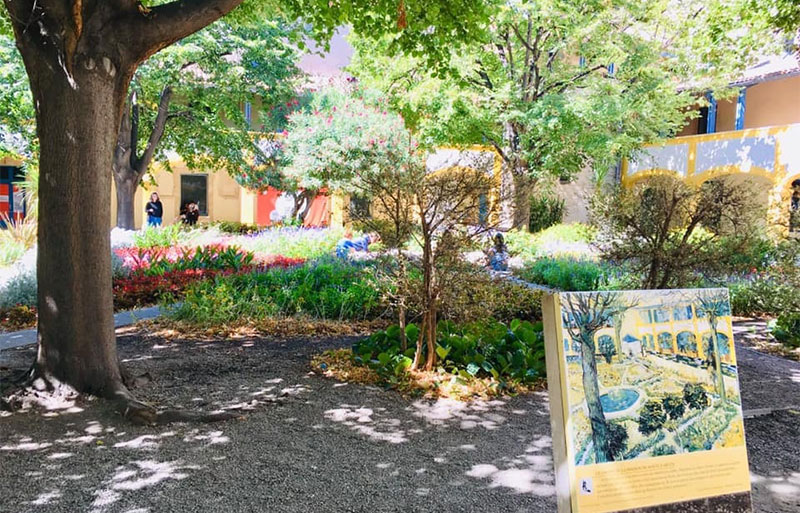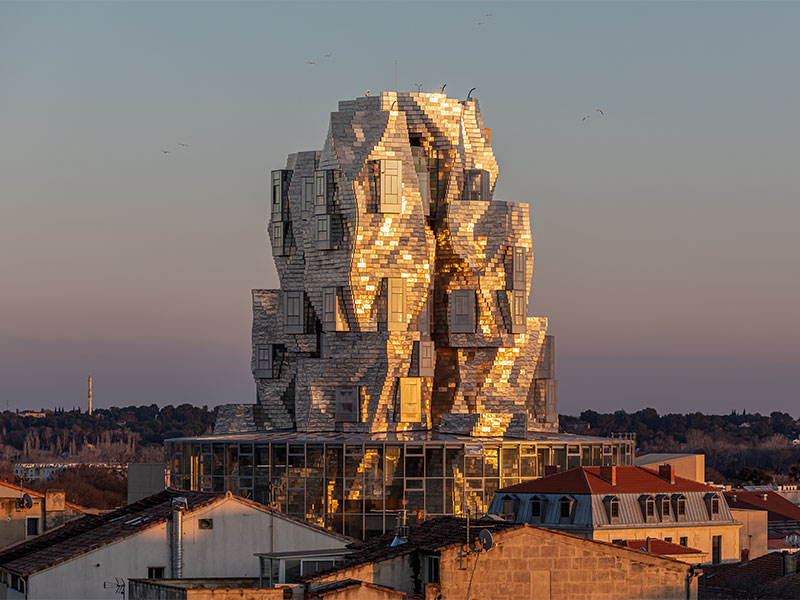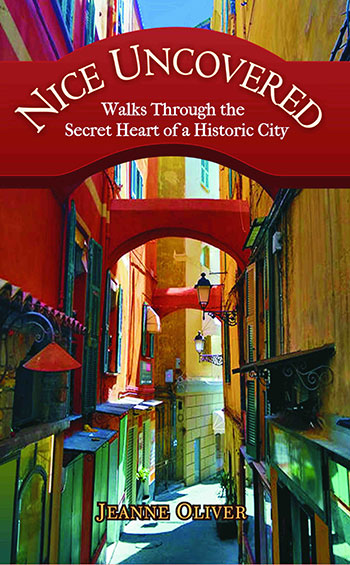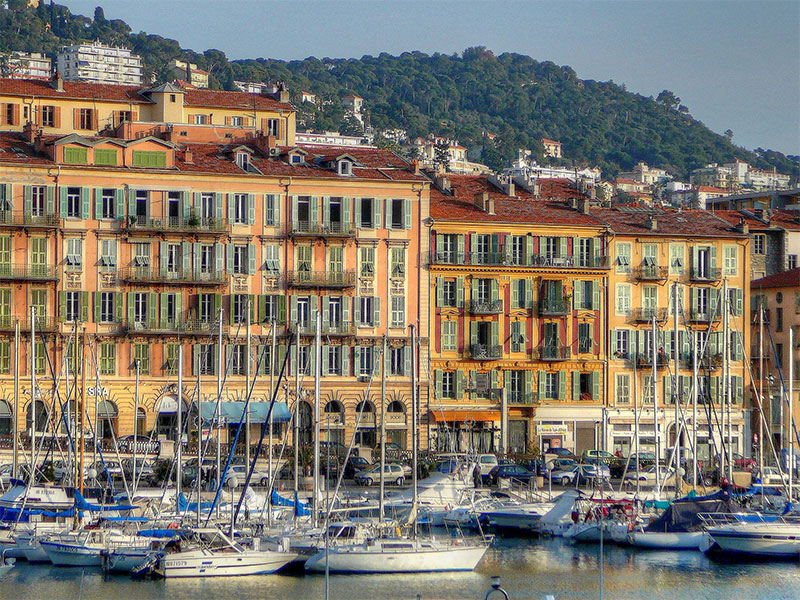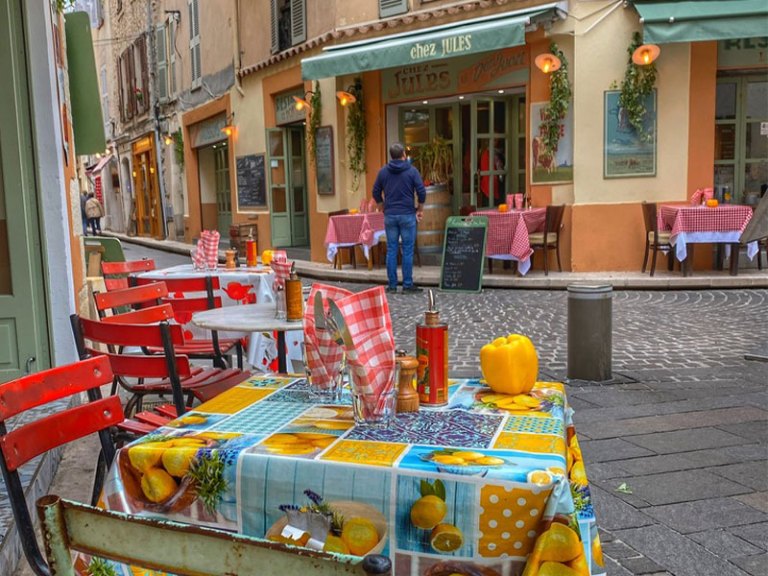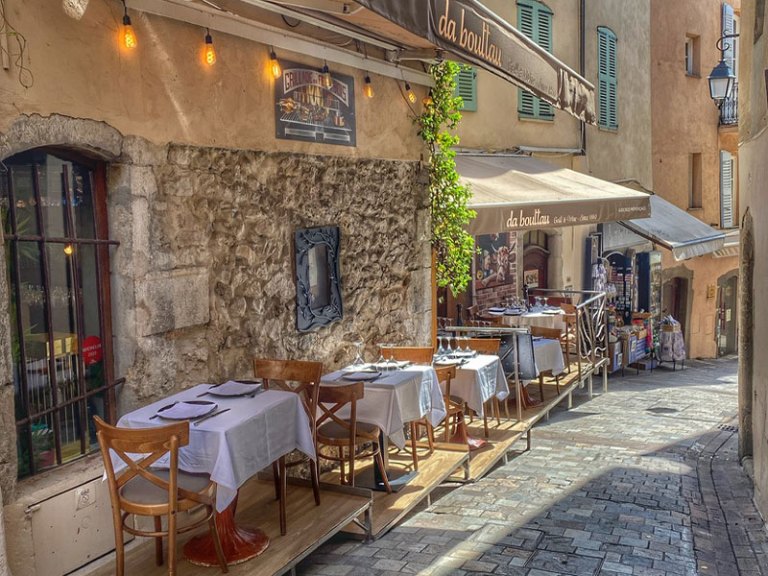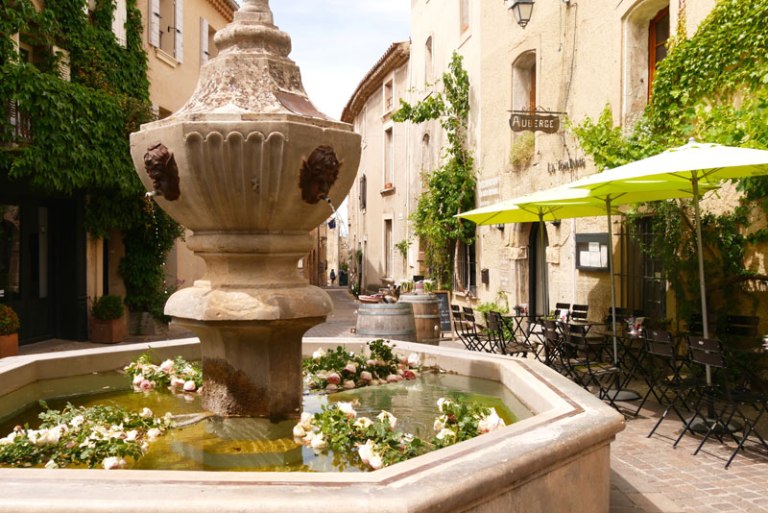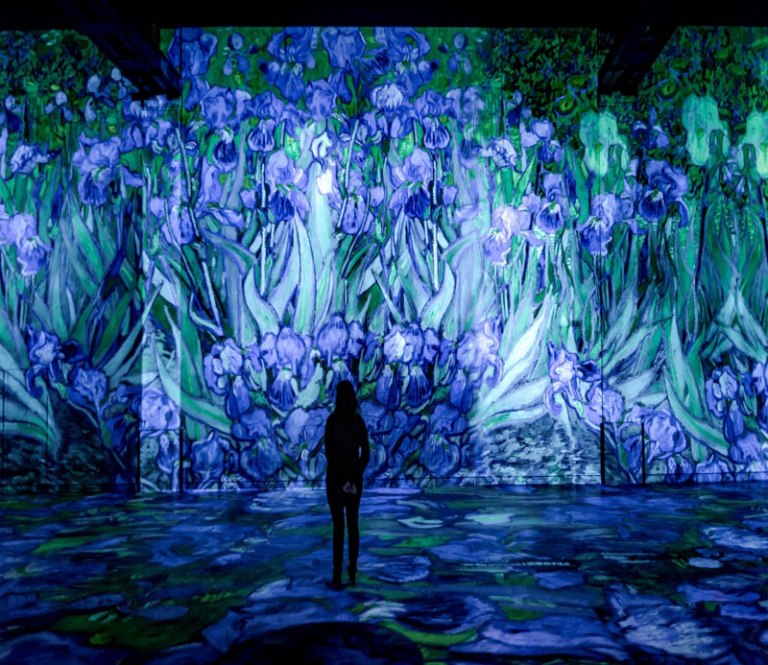Listed by UNESCO for its architectural heritage, Arles offers an irresistible Mediterranean lifestyle at the gateway to France’s largest wetland. Gillian Thornton let herself go with the flow…
There are many good reasons why I would love to live in Arles. The warm Provençal sunshine. That enviable Mediterranean lifestyle. And the irresistible buzz of art and architecture from ancient times to the present day. But there’s another reason.
I’d really love to ask friends to ‘Meet me by the Roman Theatre at midday’ or ‘Catch up outside the Arena at 7 tonight’. Not many places can boast such monumental Roman meeting places as Arles in the heart of a 21st century city.
Historic past – Roman legacy
Northern gateway to the wetlands of the Camargue, Arles, in the department of Bouches-du-Rhône, stands on the right bank of the Rhône and was originally a Celtic city, later colonised by the Greeks. The Romans arrived in the 1st century AD, quickly expanding the city until it was home to some 50,000 people. More than 21,000 toga-clad citizens could watch high-octane combat in the vast amphitheatre of Roman Arelate, whilst just a short walk away across the paved streets, the theatre was the place for more intellectual entertainment. Local citizens have been meeting by these monuments ever since.
In the Middle Ages, the 130-metre arena was redeployed as a fortified community, but today you can still sit in the ancient tiers and enjoy events such as the popular Course Camarguaises, or Bull Races. No bulls are harmed in this test of man versus bovine, but human competitors can expect a few sharp scratches if they try to snatch rosettes from the up-turned horns of the local black bulls.
Too much excitement? Then buy a ticket for a summer concert or drama production at the Roman theatre, a chance to slip back in time, even without a toga. And Roman immersion doesn’t stop there. Explore the Baths of Constantine, close to the banks of the Rhône; visit the city’s well-stocked archaeological museum, the Musée Départemental Arles Antique; and stroll the tree-lined Alyscamps lined with Christian tombs. Couturier Christian Lacroix, who was born in the city in 1951, recalls happy childhood games amongst these ancient stones.
Medieval Marvels, Renaissance gems
But Arles isn’t all about the Romans. Fast forward to the 12th century when the city was further embellished with a wealth of Romanesque monuments. If you have time for just one, make it the Church of Saint Trophime with its spectacular carved portal and double-decker cloister. Invest a handful of euros for the experience of standing on the upper gallery and looking down into the tranquil space. And in the square outside, what else but a Roman obelisk, originally positioned in the Roman Circus.
In 1981, UNESCO bestowed World Heritage status on Arles for its abundance of Roman and Romanesque buildings, but turn the clock forward yet again to the 17th century to add fine Renaissance mansions to the architectural mix, testimony to the wealth of their well-to-do owners.
Artists in Arles
No surprise then that this multi-layered city attracted the artistic eye of Vincent Van Gogh who spent his most productive spell here. The Dutch artist arrived on a cold winter’s day in 1888 in search of light and found so much of it that he painted 200 paintings and produced almost as many drawings and letters in just 15 months.
Sadly none of Vincent’s paintings are on permanent display here, but it’s still spine-tingling to follow in the artist’s footsteps and stand at the spots where he placed his easel. Download the self-guided trail from www.arlestourisme.com (link below) to find ten reproductions of his work, particularly atmospheric at night when you can appreciate his vision of La Nuit Etoilée from the banks of the Rhône and the illuminated canopy of Le Café ‘Le Soir’ in Place du Forum.
Van Gogh’s legacy remains
After three psychotic attacks, one of which involved cutting off part of his ear, Van Gogh left the city in May 1889 for a sanatorium in Saint-Rémy-de-Provence, but his presence infuses the city streets to this day. Other artists left a more tangible legacy. Pablo Picasso fell in love with the Réattu Museum of fine arts, modern and contemporary art that was launched in the 19th century with a donation of works by neo-classical painter Jacque Réattu.
The collection is housed in the former Grand Priory of the Knights of Malta and in 1971, Picasso donated 57 of his drawings to what became one of the first public collections of his work. Don’t miss the city’s only original Van Gogh – a letter written by Vincent to Paul Gauguin in 1889.
The Musée Réattu was also the first French fine arts museum to have a photography department. The city has since become synonymous with photographic images. Visit any time from July through September to see photos on show in a variety of indoor and outdoor spaces as part of the International Photography Festival.
LUMA
Most recent addition to the city skyline is LUMA Arles, an eye-catching art and culture centre on the site of a former railway siding. Designed by Frank Gehry, the 56-metre high twisted tower is made from recycled materials, rising from the Parc des Ateliers and visible from all over the city.
Inside its wonky walls, experimental artists, scientists and thinkers of all kinds seek to challenge conceptions through exhibitions, accessible archives, and public events, not just around art and culture, but human rights, the environment, and research. Check out their programme at www.luma.org/arles and make time to wander the 4-hectare park, landscaped as a journey through the flora and fauna of the region.
Some love it; others loathe it. But whatever your view on LUMA Arles, there’s no denying that this controversial building is just the latest phase in a city that has been pushing the boundaries for almost 2,000 years.
Visitor information
Visit www.arlestourisme.com to plan your trip and once in town, head for the Tourist Information Office on Boulevard des Lices to book themed guided tours and pick up self-guided trail maps. A Pass Liberté is valid for one month and gives access to four monuments/museums of your choice for 12 euros (concessions, 10 euros).
Gillian Thornton is a writer who specialises in France and lifestyle.
Take a day or half day tour of Arles with Ophorus Tours
